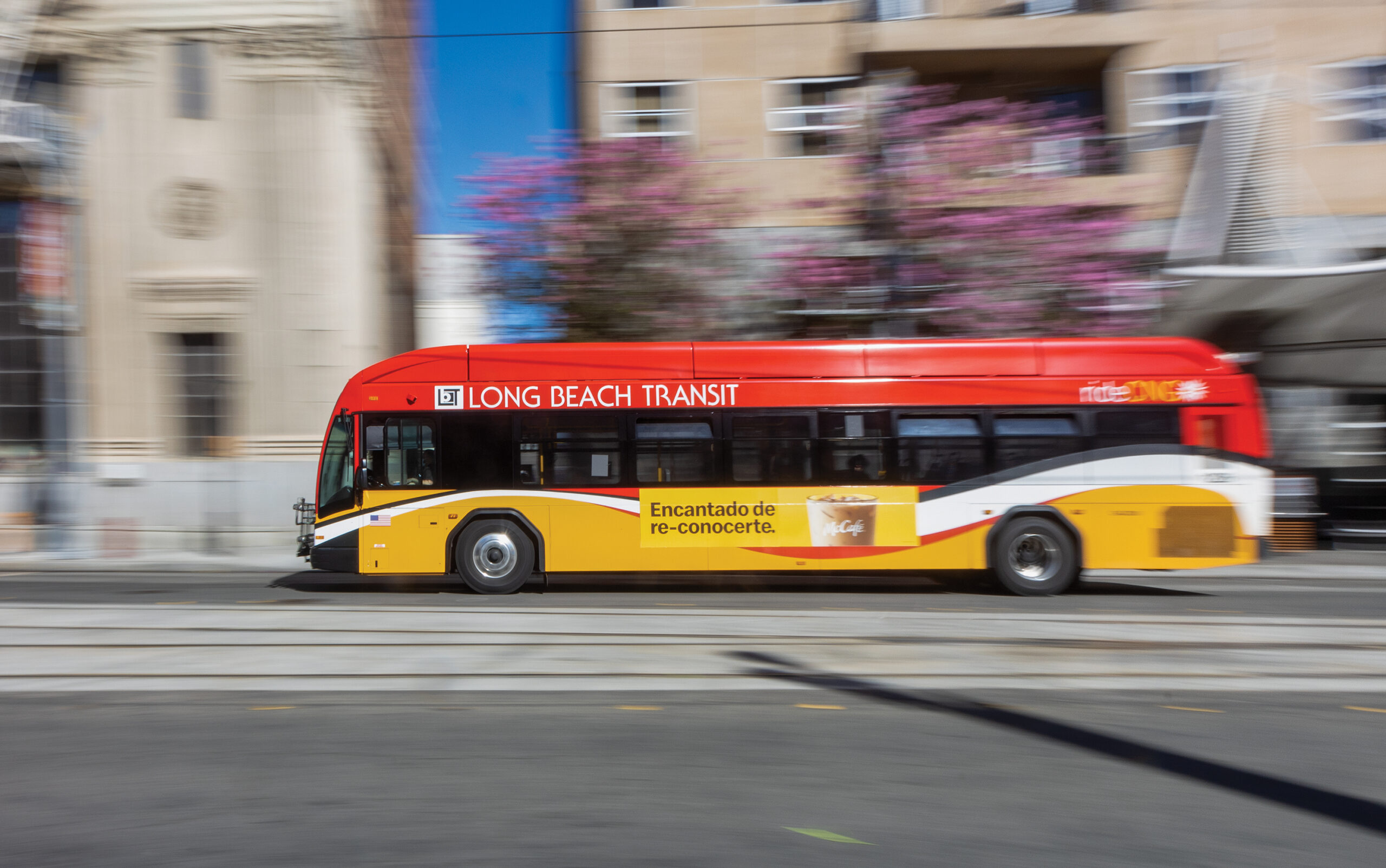
Long Beach Transit, like so many other agencies, was caught off-guard by the COVID-19 pandemic.
Before the public health crisis, the organization saw ridership growth—“some of the highest we’ve had in recent history,” LBT spokesperson Arantxa Chavarria said.
But within weeks of the coronavirus being identified in Long Beach, ridership was cut in half.
“It was immediate,” Chavarria said of the dip in riders. “It was in the first couple of weeks in March [2020].”
That drop in ridership was led mostly by a decline in student riders, according to Chavarria.
The Long Beach Unified School District does not provide its own bus service, so many students rely on LBT to get to school. But when remote learning went into effect, that transportation was no longer necessary.
It’s unclear exactly how many rides on LBT that students took in the worst of the pandemic, but the agency’s annual budget books show that school-related trips as a percentage of total trips actually grew from fiscal year 2019 to fiscal year 2020—which may underscore COVID’s impacts on the agency.
About 30% of the approximately 23 million rides that LBT provided from July 2018 to June 2019 were for school-related purposes, according to data in LBT’s Budget Book. That share remained unchanged from the previous year, but it rose to 37.4% of the 18 million rides LBT provided between July 2019 and June 2020.
As ridership numbers fell and the virus continued to spread, it was clear LBT had to make changes. The agency cut down on its schedule and routes and offered free rides starting in April 2020, which were offset by federal and city funds.
LBT did not resume charging fares again until September 2021.
Meanwhile, many free services—including LBT’s AquaLink water taxi and the ‘Passport’ bus system through Downtown—were suspended.
“[COVID] obviously shifted how we were thinking of ridership,” Chavarria said.
“At [that] point, we are focusing on those frontline customers, and those customers are essential workers,” she added. “So how do we provide a service that is 1) useful for them, and also something that they feel safe using?”
This approach was not exclusive to riders. LBT’s own employees—considered essential workers themselves—were also impacted by the virus. With people falling sick or simply uncomfortable driving a public bus in a pandemic, LBT saw a shortage of workers.
“So the question became, ‘How do we manage that, and how do we continue with our hiring?’” Chavarria said.
LBT put several measures in place to reassure potential employees of the safety and benefits in working with the agency, including testing and an increase in pay for bus drivers.
“I mean, we’re still experiencing it now,” she said. “Like any organization that is hiring right now, we’re seeing challenges.”
As the pandemic moves closer to becoming endemic, LBT continues to take a measured approach toward its return to normal operations.
“We’re taking it one step at a time,” Chavarria said. “Health and safety is our main priority for both our employees and customers.”
Ridership numbers—which are unclear during the fee exemption because payments are used to measure rides—began to gain momentum towards recovery last summer. Currently, ridership and overall bus service sits at approximately 75% of its pre-pandemic level.
As this number continues to grow and get closer to earlier norms, LBT has begun resuming some of the free services it was forced to cancel, including a weekend return of the AquaLink service and the Galaxy Express that provides free service to the LA Galaxy’s home at Dignity Health Sports Park.
“Our customers can feel safe returning back,” Chavarria said, “because there’s no issue for essential workers or grocery store workers or restaurant workers.”
While LBT doesn’t make projections, there is anticipation that ridership will return in stride when schools and their students get back on board Long Beach buses through the GoPass initiative that the LBT Board of Trustees adopted in December.
The two-year pilot program allows Long Beach schools to pay a fee to allow their students to ride on Long Beach buses and affiliated Metro lines for free, and LBT expects that schools will finish signing up for this program and begin implementing it soon.
“We do expect that when schools come on board, we will see an influx of students,” Chavarria said. “Hopefully that will help drive other customers in the city, other individuals that are not usually customers, and help them feel safe enough to bring them back on our buses.”
